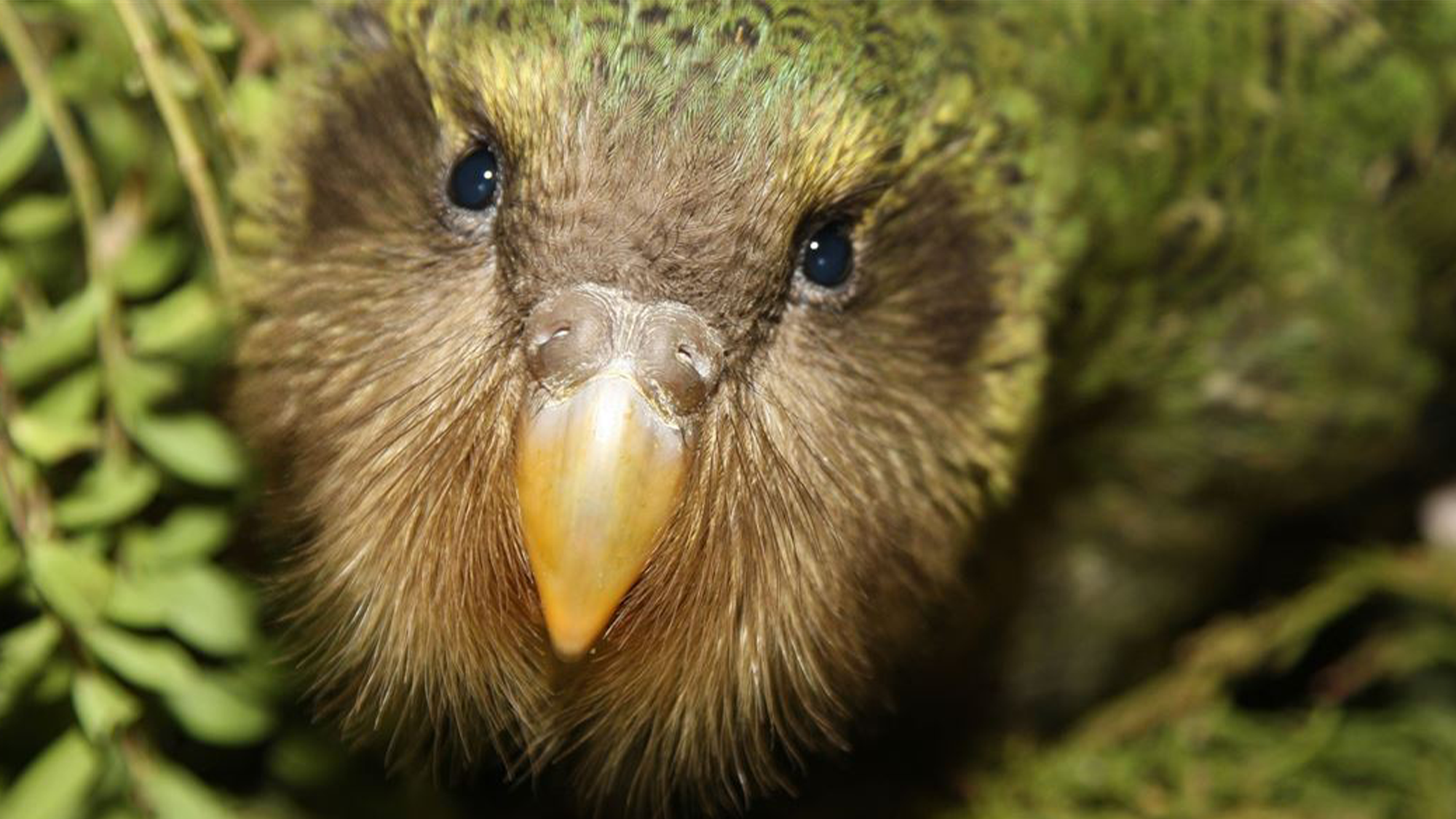

For the first time in almost 40 years, New Zealand’s quirky and critically endangered kākāpō will return to the country’s mainland. Kākāpō are large flightless parrots that used to be widespread across New Zealand, before being hunted to near extinction. The birds last lived on mainland New Zealand in the 1980s. The last time they were present on the North Island was in the 1960s when five of the birds were living in captivity, according to New Zealand’s Department of Conservation.
[Related: Researchers release more than 5,000 snails in the Pacific.]
Currently, kākāpō only live on five offshore islands: Pukenui (Anchor Island) and Te Kakahu o Tamatea (Chalky island) in Fiordland, Whenua Hou (Codfish Island) and Pearl Island near Rakiura Stewart Island and Hauturu-o-Toi (Little Barrier Island).
The Department of Conservation in partnership with the South Island’s Ngāi Tahu tribe is moving four male kākāpō from Whenua Hou near Rakiura Stewart Island to Maungatautari (Sanctuary Mountain) in Waikato. The four kākāpō are not intended to breed at Maungatautari. The main focus of the project is learning what types of new habitat, outside of the established offshore islands, that the kākāpō can live in.
This translocation follows decades of conservation work through the Kākāpō Recovery Programme. The effort utilized modern science and Māori matauranga (knowledge) to help bring the iconic species back from extinction. The population doubled to reach a high of 252 birds between 2016 and 2022.
Returning this critically endangered nocturnal ground-dwelling parrot back to the mainland is significant for the whole country and a shared success story for all partners involved, according to the team.
“Kākāpō are one of Aotearoa’s [New Zealand’s] most iconic and rare species, recovering from a population low of 51 birds in 1995,” Department of Conservation Manager for Kākāpō Deidre Vercoe said in a statement. “Until now, kākāpō have been contained to a few predator-free offshore islands, so to have them now returning to the mainland is a major achievement for all involved.”

Image: Don Merton | Department of Conservation (NZ)
Te Rūnanga o Ngāi Tahu Deputy Kaiwhakahaere (manager) Matapura Ellison added that this is a key aspect of the translocation is the iwi to iwi (people to people) transfer of the four birds from Ngāi Tahu to Ngāti Koroki Kahukura, Raukawa, Ngāti Hauā, and Waikato.
“This is a milestone translocation, and we are thankful for our iwi partners who will keep our taonga (treasured) kākāpō safe at their new habitat on Maungatautari,” Ellison said in a statement. “The whanaungatanga [forming relationships] between our iwi is strengthened further through the shared kaitiakitanga of these precious manu.”
[Related: This three-foot-tall parrot proves New Zealand is the mecca of giant weird birds.]
This translocation is a new phase in the recovery of this marks a new phase for the recovery of this taonga (treasured) species. Returning them to their natural range on the mainland in unmanaged populations has long been a goal, but they need a habitat that is free of introduced mammalian predators such as rats from escaped ships.
The translocation will be marked with a Maori welcoming ceremony called pōwhiri and celebration at Pōhara Marae followed by the release at Maungatautari. The ceremony is set to acknowledge the many people and groups that played a part in kākāpō conservation and the work to make the mountain a “kākāpō-proof” and predator-free inland sanctuary. It will also mark the transfer of care of these four founding birds between peoples.
Kākāpō are experts at camouflage, and the team believes it is unlikely that visitors to the sanctuary will come across them. Visitors could, however, hear their distinctive ‘booming’ calls for the first time in several years.
“Sanctuary Mountain is a large space, with plenty of good habitat for kākāpō, but it’s still unknown whether they will successfully establish here long-term,” said Vercoe. “The main focus of this translocation is to learn if kākāpō can thrive in a fenced sanctuary, while taking pressure off the islands ahead of future breeding seasons.”
